From gold to fossils: Wales' history in unusual treasures
As prospectors seek to re-open a disused goldmine in north Wales, here we look back at some other curious finds from across the country.

1. Our very own dinosaur
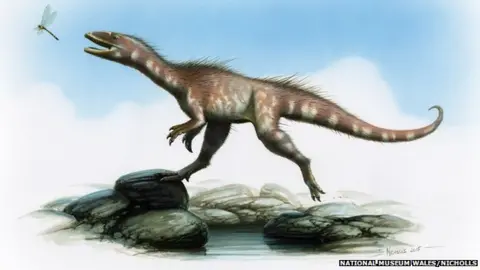 National museum wales/Nicholls
National museum wales/Nicholls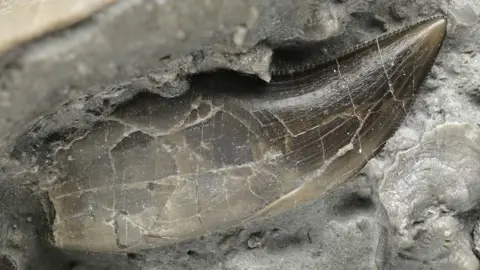 J.TURNER
J.TURNERWhile Wales may be more famous for being a land of dragons, it also seems Wales was a land of dinosaurs with the discovery of a new species of beast by fossil hunter brothers Nick and Rob Hanigan. The juvenile therapod was found after a rock fall off cliffs in Llantwit Major, Vale of Glamorgan in 2014. Named after the Latin for dragon robber and the brothers' name, the 201 million year old dracorapter hanigani, a relative of T-Rex, is now on display in the National Museum of Wales.

2. Celtic chariot
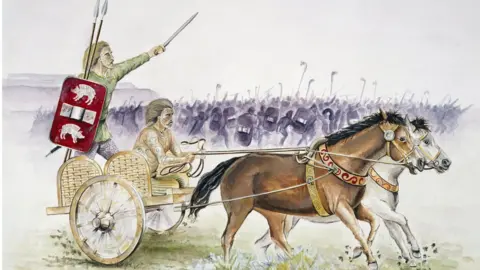 Heritage Images
Heritage Images Mike Smith
Mike SmithAfter prospecting with a metal detector for three decades, Mike Smith, of Milford Haven, finally struck lucky when he dug up part of a Celtic horse harness dating from around 2,000 years ago. The find - which also included a terret ring to guide reins and a pair of chariot wheels - is believed to be the first Celtic chariot burial found in Wales. Chariot burials were reserved for high-ranking chiefs, who would be interred with their chariot, horses, tack and even weapons.

3. Crop marks revealing prehistoric sites
 RCAHMW
RCAHMWThe 2018 heatwave had some surprising consequences for aerial archaeologists. From their lofty heights, they spotted countless long lost settlements as crop marks. One such site was found near Tywyn, Gwynedd, while other prehistoric sites and a suspected Roman fortress were spotted in Monmouthshire. The discoveries are now being followed up by research on the ground.

4. Gold in them thar hills
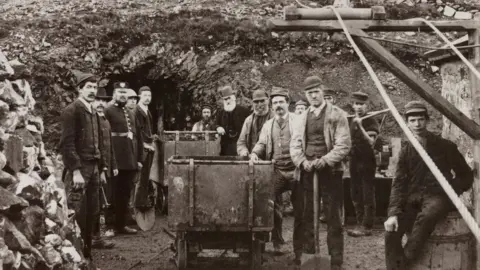 Clogau
ClogauIs there gold in them thar hills? That is what bosses of a gold mining firm are hoping as they carry out research across a 20-mile stretch of the Dolgellau gold belt in Gwynedd. Their plan is to re-open the Clogau St David's gold mine at Bontddu, Dolgellau, which was shut in 1989. Gold from Clogau has been used for many royal weddings - a tradition that began with the Queen Mother in 1923.

5. Mold's gold cape
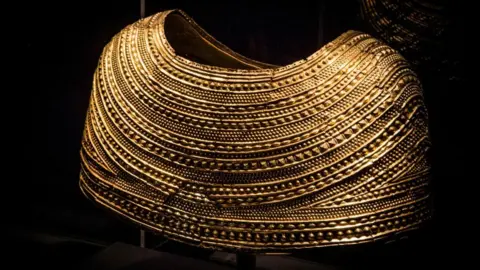 The Trustees of the British Museum
The Trustees of the British Museum This gold cape is a unique ceremonial cape of gold that once slotted over its wearer's shoulders. Made in the Bronze Age around 3,700 years ago, it was found in 1833 by quarrymen in Mold, Flintshire. They uncovered a stone-lined grave with the remains of a skeleton and the cape. Considered one of the finest examples of gold working in Europe, it is now one of the British Museum's most prized artefacts.

6. An ancient canoe
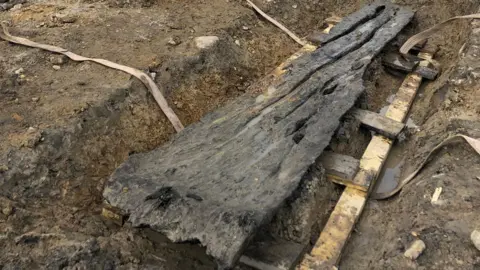 Welsh Government
Welsh GovernmentThis may look like a rotten old plank - in fact, it is most probably a Bronze Age dug-out canoe found in north Wales under a burnt mound. The hollowed-out oak tree would have likely ferried around cargo - perhaps copper from Anglesey - on the river networks. It could have also aided migration in early Britain, taking people to and from the area along river networks or even overseas.

7. Medieval treasures
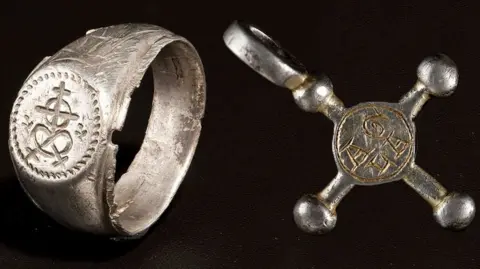 Amgueddfa Cymru-National Museum Wales
Amgueddfa Cymru-National Museum WalesMost precious finds from the Middle Ages were items that were accidentally lost, according to Rhianydd Biebrach of the Saving Treasures, Telling Stories programme run by National Museum Wales, Cardiff. This ring, from 1500, once belonged to a merchant from Haverfordwest. It is engraved with the Tau cross of St Anthony, who was believed to protect against disease. The pendant, found near Newport, also had religious significance, the inscribed letters AGLA making reference to the Hebrew phrase Atha Gebri Leilan Adonai, meaning 'Thou art mighty for ever, O Lord'.

8 A medieval ship
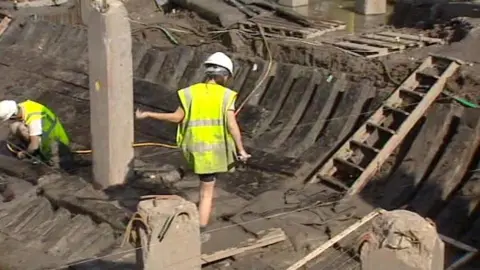
Hidden treasures do not come much bigger than this one. A 15th Century merchant ship was discovered in the mud on the banks of the River Usk in 2002, during building work for Newport's Riverfront Theatre. There was a local campaign to preserve it and archaeologists have since been painstakingly preserving the 2,000 timbers and artefacts - from shoes, coins to a cannonball - discovered during the excavation. The Newport Medieval Ship - which would have been 30m long - is believed to originate from the Basque region of Spain in the mid 1450s and visitors are able to see ongoing conservation work for themselves.

This piece was inspired by a question from a reader. If you have any questions you'd like us to answer, please use the form below to send them in.
If you are reading this page on the BBC News app, you will need to visit the mobile version of the BBC website to submit your question on this topic.
